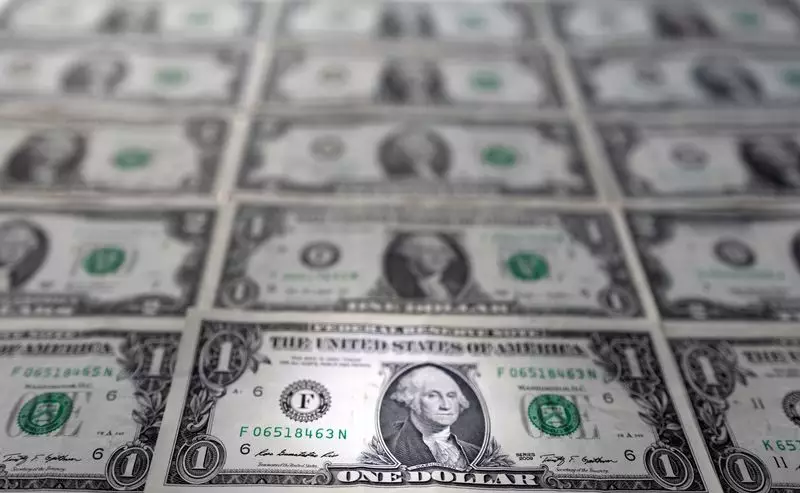As investors eagerly await the release of key U.S. inflation data and updated interest rate projections from the Federal Reserve, the dollar has managed to stabilize after reaching a four-week high against other major currencies. This stability comes in light of Friday’s stronger-than-expected jobs report, which has sparked concerns about sticky inflation levels and robust economic growth. As a result, the likelihood of a rate cut by the U.S. central bank in the near future has diminished, with market players now pricing in a 56% chance of a cut in September, down from 77.8% just a week ago.
The U.S. Consumer Price Index numbers, set to be released later in the day, will provide valuable insights into the current inflation situation. Economists are anticipating a slight easing in headline consumer price inflation to 0.1% from 0.3% last month, while core price inflation is expected to remain steady at 0.3%. The focus will then shift to the Federal Reserve’s decision on interest rates, with expectations running high for rates to be held steady at 5.25% to 5.5%. Investors will closely monitor the release of updated economic projections, notably the “dot plot,” and Chair Jerome Powell’s subsequent press conference for hints on the timing of potential rate cuts.
Analysts suggest that the consensus within the Federal Reserve is leaning towards a downgrade in the number of projected rate cuts in 2024, reducing the current count from three to two. The dollar index, which measures the greenback against a basket of major currencies, remains relatively stable at 105.27, following its recent peak at 105.46. Meanwhile, the euro and sterling have both shown minimal movements, with the euro hovering around $1.07375 and sterling at $1.2735. Market reactions to recent events, such as French President Emmanuel Macron’s call for a snap election and UK gross domestic production figures, continue to influence these currency pairs.
In Japan, wholesale prices have surpassed market expectations, growing by 2.4% in the year to May. The yen has remained relatively steady against the dollar at 157.16, despite hitting a low of 157.40 the day before. The Bank of Japan’s upcoming meeting is widely anticipated to hold interest rates steady, while deliberating on strategies to reduce its considerable balance sheet. Analysts suggest that the BOJ will need to tread carefully to avoid triggering further outflows of the yen, while also supporting economic growth and maintaining stability in bond markets.
The recent fluctuations in the currency markets have also had an impact on cryptocurrencies, with bitcoin showing a slight increase to $67,339.00. Market participants are closely watching the outcome of the U.S. CPI data release and the Federal Reserve meeting to gauge potential movements in the dollar and overall market volatility. While the possibility of another rate hike may seem unlikely at this point, unexpected developments in the inflation figures could still influence the future trajectory of the dollar and other major currencies.


Leave a Reply